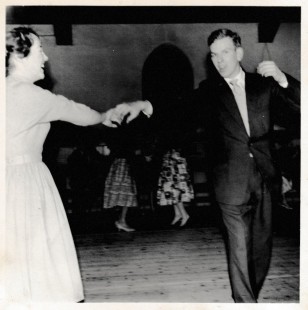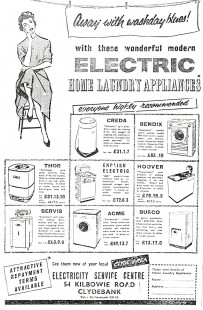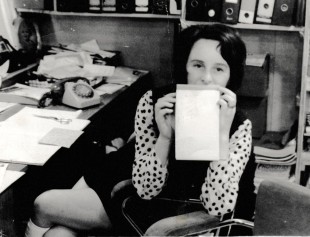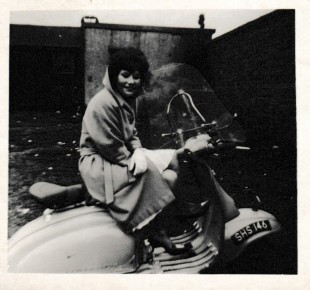The year 1950 was greeted with high hopes: things could now get back to the ‘way we were’. With the war over, the longed-for peace was now a reality. Lights were on again all over the world and the nation was ready to make a new start. In West Dunbartonshire, everyone was glad to be leaving the previous decade behind with all the horror of six years of a war which had devastated many of our own homes and towns. In Clydebank especially, the epicentre of the bombing, houses were at a premium as the council started to build housing schemes at Drumry, Linnvale and Faifley to replace all that had been destroyed. You knew you had years to wait on the council list.
Going to the pictures was popular as most people didn’t have a TV. We’d steal fashions from the stars and copy them for going to the dancing. There was the pencil skirt or the big dirndl skirt with the giant underskirts soaked in sugar to hold it out. Dancing was the biggest excitement of them all and where most of us met our husbands.


Rationing and general shortages continued right into 1953 and jobs were scarce to begin with. Legislation meant demobbed service personnel could apply to get their old jobs back, so women were expected to return to the role of housewife and mother. Housework was hard with few electrical appliances and in the absence of fridges and supermarkets, food was bought and carried home daily.
However, the fifties were slow to realise it but the seed for change had already been planted. Rock ‘n’ Roll had arrived.
The new NHS meant the general health of the population was improving. Then in 1961 the arrival of the contraceptive pill freed married women from frequent and inevitable pregnancy. This changed everything. So did twin tub washing machines, TVs and hoovers which all became more attainable.


Old assumptions began to break down during the 1960s, but dancing was still all the rage. This time it was miniskirts and maxi-dresses, bouffant hair and Mary Quant makeup. In schools there was less accent on learning how to look after the home, and by delaying starting their family, more women were able to work after marriage.
A great sense of community existed across West Dunbartonshire and beyond, especially in workplaces like Singers and United Turkey Red. That sense of belonging and looking out for friends and neighbours is still there today.
We have tried to highlight the changes in women’s lives across these two decades, so different from our own, and hope you enjoy what you find.
Memories of Women’s Lives
Members of the Women Making History in West Dunbartonshire group have shared stories about their lives in the 1950s and 60s, writing about home life, Saturdays on the town, working life, and a wedding.
- A Girl’s Career in the 1950s
- Those Were the Days by Anne Macdonald
- My 1960s Wedding by Nancy Macdonald
- Home Life for the Women of the 1950s by Isa McKenzie
You can also read more in the downloadable Women Making History in West Dunbartonshire booklet, or explore the images and objects of the Memory Box.

